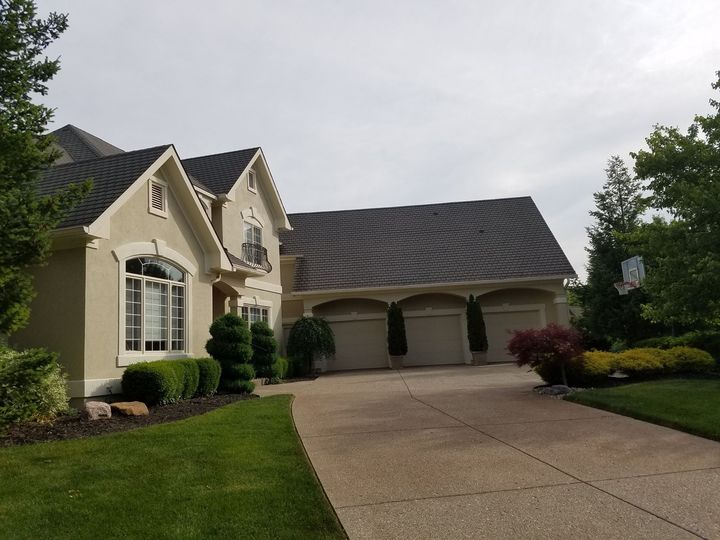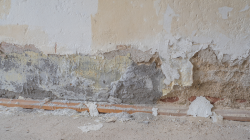Unlocking the Secrets of EIFS Durability: Your Ultimate Guide to Inspection and Repair
As a homeowner or building owner, you want your property to look its best and maintain its value. For buildings with exterior insulation and finish systems (EIFS), also known as synthetic stucco, regular inspections and proper maintenance are crucial. Read on to learn why EIFS inspections and repairs should be a key part of your building maintenance plan.
What is EIFS?

EIFS refers to a type of exterior wall cladding that consists of several layers applied over the substrate, or exterior wall. It is sometimes confused with traditional stucco, but EIFS is a very different wall system. The main components of an EIFS wall include:
- Substrate – Typically made of plywood, OSB, brick, concrete block, poured concrete, or CMU. This provides the structural base that the EIFS is attached to.
- Adhesive – Used to bond the insulation boards to the substrate.
- Insulation boards – Rigid expanded polystyrene (EPS) foam boards that provide thermal insulation and impact resistance.
- Base coat – A fiber-reinforced polymer and cement layer that embeds the reinforcing mesh.
- Reinforcing mesh – Glass fiber mesh embedded in the base coat to provide strength and impact protection.
- Primer coat – Optional layer to improve finish coat bond.
- Finish coat – Acrylic-based coating available in various textures and colors. This is the decorative exterior layer.
The multiple layers of EIFS provide excellent insulation, improving the building’s energy efficiency and reducing heating and cooling costs. EIFS is also lightweight yet durable, can be customized with various textures and colors for aesthetically pleasing designs, and protects against moisture intrusion when properly installed and maintained.
The Benefits of Using EIFS

There are several reasons EIFS has become such a popular choice for residential and commercial buildings:
- Outstanding thermal performance – EIFS can reduce heat loss through walls by up to 85% compared to brick or siding. This significantly lowers heating and cooling energy usage.
- Aesthetic versatility – EIFS can be crafted into nearly any shape and texture. Decorative accents, arches, and custom designs are easily achieved.
- Speed of installation – EIFS installs faster than other claddings, speeding up construction.
- Lower maintenance – Properly installed EIFS requires very little ongoing maintenance. It does not need repainting like wood siding.
- Cost savings – The high insulation value means smaller HVAC systems can be used, resulting in lower construction and operating costs.
- Weather resistance – EIFS withstands weather extremes, resists rot and decay, and prevents moisture intrusion when properly maintained.
- Lightweight – Weighing only about 2 to 7 lbs per square foot, EIFS places less load on structures than other claddings.
- Sustainable – EIFS can qualify for LEED and other green building standards due to its energy efficiency and other eco-friendly attributes.
- Noise reduction – EIFS provides excellent sound dampening, making it ideal for multi-family housing.
With this outstanding combination of benefits, it’s easy to see why EIFS has surged in popularity over the past 20 years.
The Importance of Proper Installation

To gain all the benefits of EIFS and avoid potential problems, proper installation is crucial. Here are some best practices for installation:
- Select an experienced EIFS contractor who follows manufacturer guidelines and holds current EIMA certification. Never let an unqualified contractor install EIFS.
- Use quality materials from reputable brands that are designed to work together as a system. Mixing products can cause failures.
- Inspect the substrate and make any needed repairs before installing EIFS. The substrate must be in good condition to support the cladding.
- Include an effective weather-resistant barrier to prevent water intrusion into the wall. A synthetic underlayment or building wrap works well.
- Attach insulation boards securely to the substrate using manufacturer-approved adhesive. Proper board attachment is critical.
- Avoid installing EIFS below grade or where it may stay wet. Use an alternate cladding for damp areas.
- Install code-approved backwrapping and flashings at all openings, penetrations, and transitions to prevent water entry.
- Embed reinforcing mesh completely in the base coat to provide impact protection and strength.
- Apply the finish coat to the recommended thickness and texture using a skilled applicator.
- Seal all joints and edges thoroughly with compatible sealant to prevent water intrusion.
When installed correctly following EIFS best practices, the system will provide many years of optimum performance.
Why are EIFS Inspections So Important?
While EIFS offers numerous benefits, it also requires proper care and maintenance. Moisture issues are the main cause of problems with EIFS buildings. Water intrusion usually enters through imperfections in the EIFS, including cracks, unfinished edges, unfinished penetrations like vents or utilities, and deteriorated or improperly installed flashings around windows, doors, and other openings.
Over time, this moisture intrusion can lead to damage like mold growth, rotting framing, and interior water leaks. That’s why regular professional EIFS inspections are so critical. A thorough inspection can identify issues early so repairs can be made before costly damage occurs.
What Do EIFS Inspections Check For?
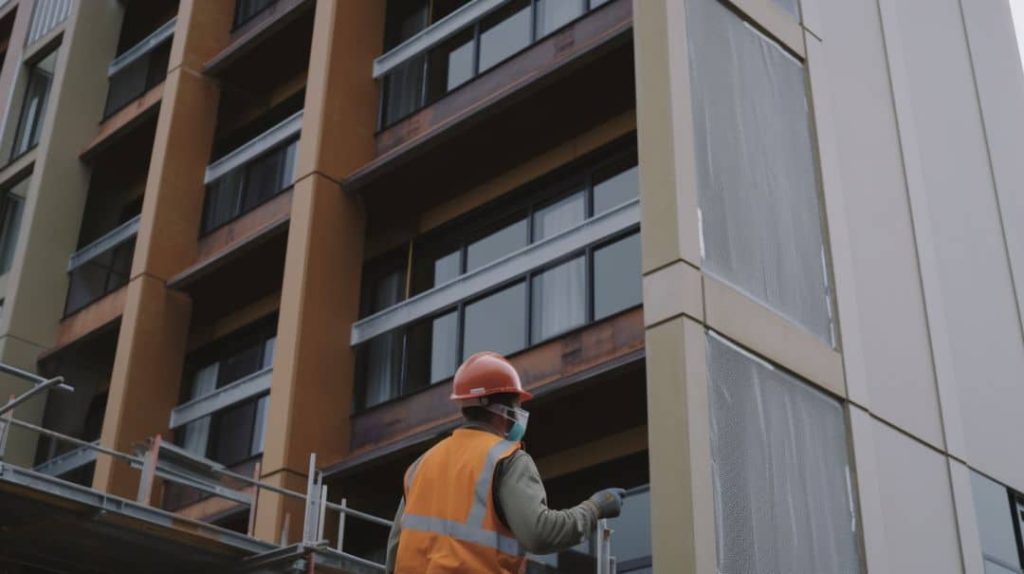
A comprehensive EIFS inspection examines all components of the cladding system for proper installation, deterioration, and moisture intrusion risks. Areas of focus include:
- Attachment of insulation board to exterior wall substrate. Loose boards can allow water intrusion and must be re-secured.
- Base coat coverage and condition. Bare spots expose the insulation to damage. Cracks in the base coat can admit water.
- Overall condition of the acrylic finish coat. Cracks, punctures, and deterioration must be repaired to maintain weatherproofing and aesthetics.
- Sealants around openings and penetrations. Failed or missing sealant is a major source of water entry.
- Flashings around windows, doors, vents, lights, and other penetrations. Defective flashings cause most EIFS failures.
- Signs of cracks, punctures, unfinished edges. Any breaches in the EIFS compromise its moisture protection.
- Water stains or damage. Evidence of moisture intrusion demands further investigation and repair.
Inspectors use methods like visual examination, moisture meters, and infrared cameras to detect potential defects both on the surface and within the wall assembly.
When Should EIFS Inspections Happen?
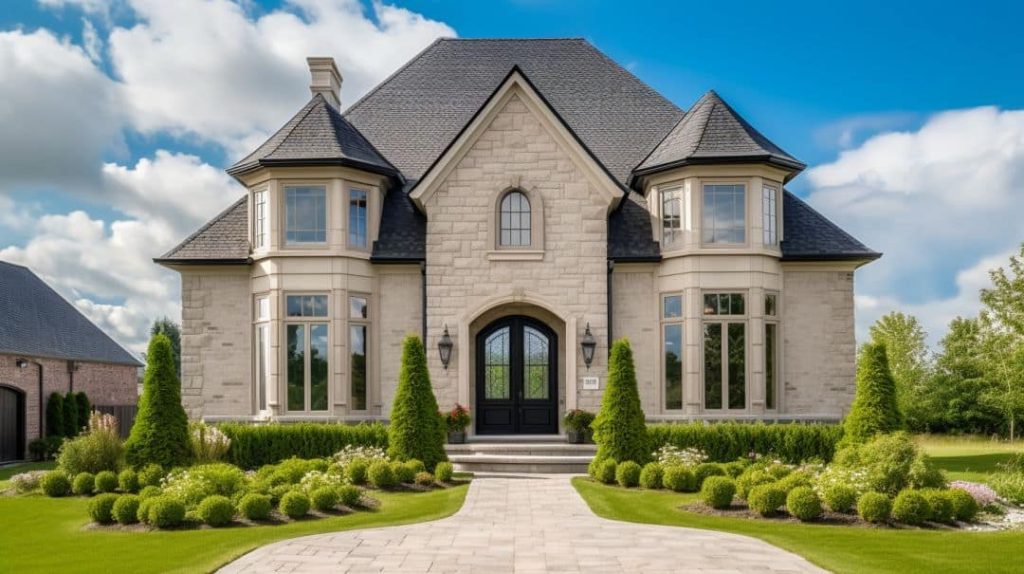
To maintain peak EIFS performance, inspections should occur at the following key times:
- After installation – New EIFS should be inspected to verify proper installation before the warranty period begins.
- Annually – Regular yearly exams allow early identification and repair of small issues before they become major problems. Annual inspections are recommended.
- After major storms – Strong winds, hail, and blowing debris can damage EIFS. Prompt inspections after severe weather identify any repairs needed to prevent water entry.
- When problems appear – Signs like cracks, staining, mold, and peeling finish require an immediate inspection to determine the cause and needed repairs.
- During restoration planning – Inspections help determine whether sections of EIFS can be repaired or need full replacement during restoration projects.
- Before buying/selling – Inspections provide crucial information on the condition of the EIFS and any needed repairs during real estate transactions.
By making inspections at these key intervals, building owners and managers can stay ahead of EIFS issues and avoid costly damage.
What Repairs May Be Needed?
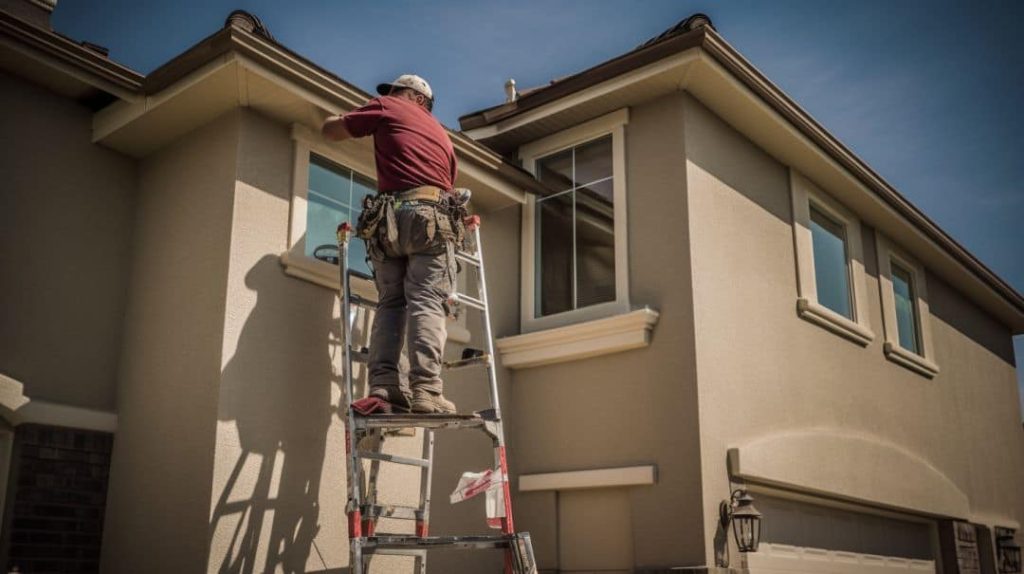
Based on inspection findings, a range of EIFS repairs may be required:
- Resealing – Deteriorated sealant around openings, joints, and unfinished edges is replaced to prevent water intrusion. Matching the original sealant type is vital.
- Reflashing – Defective flashings around windows, doors, lights, and other penetrations are re-installed following EIFS flashing best practices.
- Patching – Small cracks, punctures, or other finish coat damage can often be repaired by patching and spot priming/repainting.
- Finish coat renewal – Faded, eroded, or discolored finish coats may need renewal to restore appearance. This involves cleaning, spot repairs, priming, and recoating.
- Insulation replacement – Moisture-damaged insulation boards must be removed and replaced. New adhesive, base coat, mesh, and finish are applied.
- Section replacement – In some cases, moisture and system failures require removing large sections of EIFS and replacing all components before recoating.
- Drainage improvements – Poor drainage is a common deficiency. Improving site drainage, landscaping, and adding moisture management features helps reduce EIFS water exposure.
- Sensor installation – Moisture sensors that detect leaks as they occur can be installed within the wall assembly during major repairs.
The specific repairs needed depend on the inspection findings and the severity of any damage discovered. In some cases, repairs may be extensive enough that full EIFS replacement is the best option.
Typical EIFS Repair Process
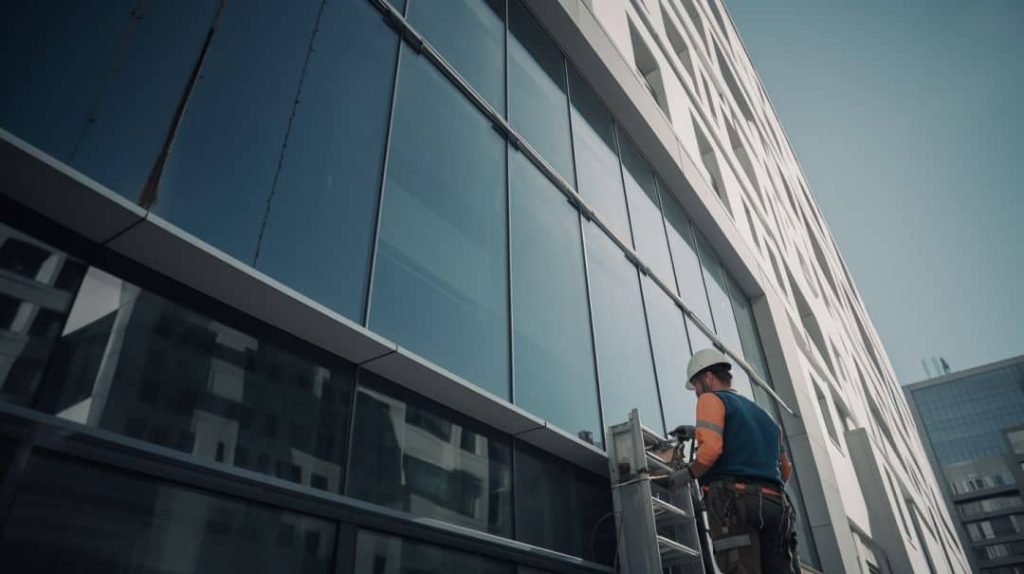
Typical steps for repairing damaged sections of EIFS include:
- Damaged areas are marked and isolated. A perimeter is cut around the repair area just through the finish coat and base coat.
- Finish coat is carefully removed using scrapers, putty knives or other tools, avoiding damage to the underlying base coat.
- Base coat is exposed and any damaged areas are patched. Reinforcing mesh is added if needed.
- Insulation boards are removed and replaced if moisture is damaged. New adhesive is applied.
- New base coat with embedded reinforcing mesh is applied over insulation boards.
- After the base coat cures, a fresh finish coat is applied and textured to blend with surrounding areas.
- Paintable caulk is used to seal the repaired perimeter edge.
- The repaired area and sealants are painted with matching elastomeric coating to blend with surrounding EIFS.
Proper staging, safety protocols, and handling of hazardous materials are also part of professional EIFS repair. Training and experience are needed to complete repairs correctly.
Why Hire a Professional for Inspections and Repairs?
EIFS requires specialized expertise to properly inspect and repair. The multiple-layered assembly is intricate to work with. Using improper methods or unqualified contractors risks further damage and voided warranties.
Certified EIFS inspectors know what to look for and use advanced diagnostic tools and testing. Qualified EIFS repair contractors have extensive product knowledge and experience to fix problems correctly.
Professionals also ensure repairs meet warranty requirements and building codes. Trying DIY repairs on your EIFS could be a costly mistake. Protect your investment by hiring a reputable EIFS inspection and repair company.
Questions to Ask Prospective EIFS Inspection/Repair Firms

To select the right provider for your project, ask these key questions:
- Are you certified as an EIFS inspector and EIFS repair contractor? How long have you specialized in EIFS services?
- How many EIFS inspections and repairs have you completed in the past 5 years? Can you provide referrals?
- What diagnostic tools and testing do you use during inspections? Do you provide moisture mapping?
- Do you follow manufacturer guidelines and warranty requirements for repairs?
- Do you handle all necessary safety protocols and hazardous materials procedures?
- Will you provide a detailed inspection report explaining repair recommendations?
- For repairs, what work is done by your own skilled employees rather than subcontractors?
- What types of warranty do you provide on inspection services and repair work?
- Do you carry proper insurance, bonding, and licenses for this type of work?
Reputable EIFS pros will have no problem providing full details about their expertise, allowing you to make an informed hiring choice.
What Does EIFS Inspection and Repair Cost?
On average, costs typically range*:
- EIFS Inspection – $0.50-$1.00+ per sq.ft. based on building size, location factors, and inspection extent
- Basic Repairs – $2-$8 per sq. ft. for things like sealing gaps and finish coat patching
- Larger Repairs – $10-$25+ per sq. ft. involving removing and replacing sections of EIFS components
- Full Replacement – $25-$45 per sq. ft. for removing old EIFS and installing an entirely new system
*Many factors affect exact costs like site access, number of stories, repair scope, and local labor rates. Reputable contractors provide detailed quotes tailored to your specific project. While not free, appropriate EIFS maintenance is far less expensive than extensive repairs or replacement due to unchecked moisture damage. (Prices may vary, subject to change).
Financial Assistance for EIFS Repairs
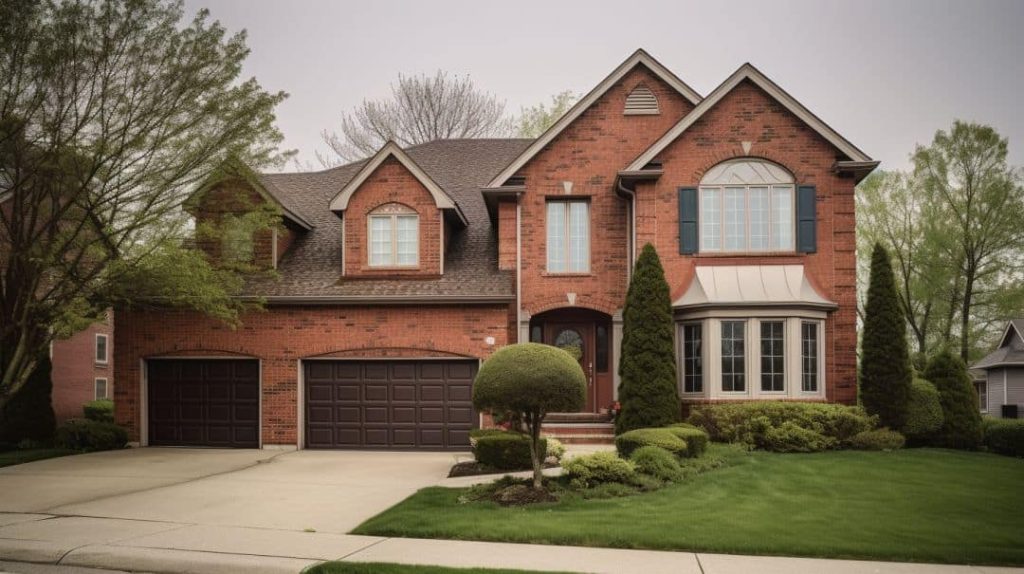
Some options to help pay for needed EIFS repairs:
- Manufacturer warranties – Most EIFS come with 10-year warranties on labor and materials. If deficiencies are due to product defects, the warranty may cover repair costs.
- Insurance claims – Homeowners or commercial property insurance may cover EIFS repairs if resulting from a covered cause of loss like storm damage.
- FHA loans – For single-family homes, FHA Title I Property Improvement loans can finance EIFS repairs with low down payments.
- SBA loans – The SBA 504 loan program can provide financing for EIFS repair or replacement for owner-occupied commercial buildings.
- Grants – Federal, state, local, and utility grants and rebates may have programs offering funding for exterior repairs, insulation, and weatherization.
- Special financing – Some EIFS contractors offer special financing options for needed repairs, especially during restoration projects.
Maintenance Tips to Protect EIFS
Along with proper inspections and repairs, regular maintenance helps avoid EIFS damage:
- Inspect exterior at least twice per year – look for signs of cracks, damage, or water entry
- Use low-pressure water and mild detergent for periodic cleaning; avoid abrasive cleaners
- Test wash a small area first when cleaning to ensure detergent will not damage the finish coat
- Check sealants around openings and penetrations, reapply as needed
- Repair cracks or punctures immediately before water can enter
- Cut back vegetation and trees contacting the EIFS surface
- Maintain proper drainage – prevent water pooling against the base of walls
- For hardscape, keep a minimum 4-6 inch clearance between EIFS and adjacent pavers, landscaping
- Ensure sprinkler heads spray away from the walls and do not soak EIFS
- Install french drains, downspout extensions, or other drainage improvements if needed
- Arrange for professional inspections at least annually
With proper maintenance and care, EIFS buildings will continue to look beautiful and perform well for decades.
Plan Ahead for Needed EIFS Repairs

Being prepared for eventual EIFS repairs will make the process smoother when the time comes:
- Keep records of the original EIFS installation and all inspections/repairs since then. Get copies from the previous owner if needed.
- Get repair estimates in advance so costs are not a surprise. Repair funds can then be set aside.
- Interview and select a qualified EIFS repair contractor before an emergency occurs.
- Determine if repairs might be covered under existing warranties or insurance.
- Explore possible financing sources for larger repairs like loans and grants.
- For commercial properties or large complexes, schedule repairs systematically over time, rather than allowing widespread failures.
With some advance planning, EIFS repairs can be completed quickly, minimizing disruptions and costs.
When is Full EIFS Replacement Recommended?
In some cases, the optimal solution is to completely remove and replace old failing EIFS assemblies rather than attempting repairs:
- When moisture damage is extensive and has permeated structural components
- If the original EIFS was poorly designed or installed wrong, limiting repair options
- When a change in EIFS type or finish is desired for aesthetics or performance
- If frequent major repairs have already been performed yet problems persist
- If enlarged window openings, additions, or other substantial alterations necessitate replacing entire sections
- When the cost of repairs reaches a large percentage of the full replacement cost
An experienced professional can advise if a full replacement is the best choice based on inspection findings and repair scope.
Benefits of Replacing Instead of Continued Repairing
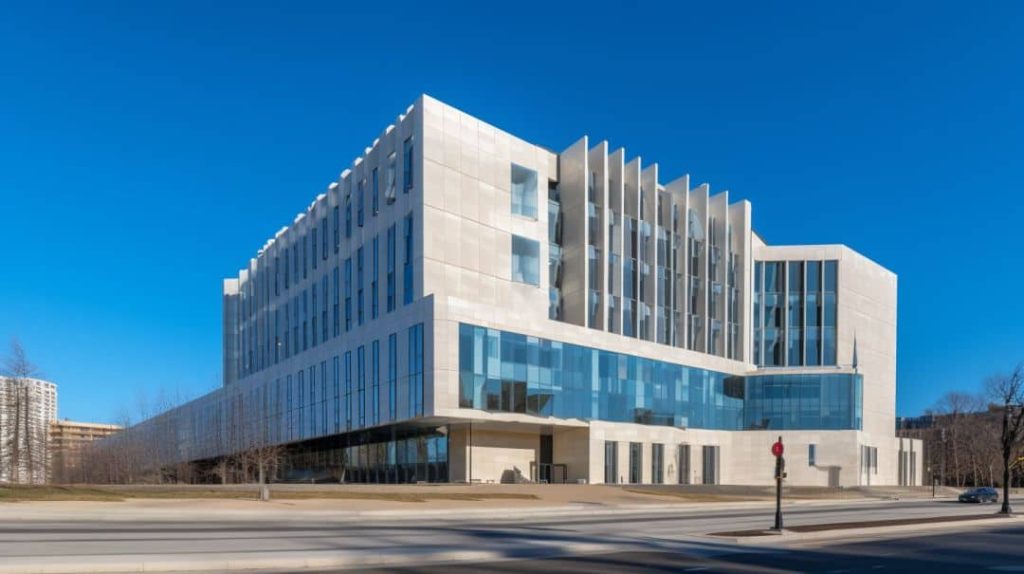
In scenarios where replacement is warranted, benefits include:
- Modern materials – New EIFS materials and finish coat formulations outperform older products.
- Advanced detailing – Current best practices for flashings, sealants, joints and other details improve performance.
- Energy savings – Added insulation improves thermal efficiency, reducing heating and cooling usage.
- Fresh appearance – New EIFS gives the property a full facelift versus trying to patch older finishes.
- Long-term value – Replacement provides long service life versus ongoing repairs.
- Meets code – New EIFS is installed to meet current building codes.
- Cost efficiency – At a certain point replacement becomes more cost-effective than continuing band-aid repairs.
- Moisture protection – New properly installed EIFS restores full weather- and water resistance.
For buildings needing significant work, EIFS replacement often proves the smarter investment over endless repairs.
Choosing the Right EIFS System
If replacement is needed, select an EIFS that matches your project requirements:
- Barrier EIFS – Uses a water-resistive barrier behind the insulation to manage moisture. A good option for many climates and exposures.
- Drainable EIFS – Allows water that penetrates cladding to drain out. Recommended for wet climates.
- Water-managed EIFS – Incorporates both drainage and water barriers to handle moisture. Provides maximum protection.
Work with an experienced EIFS installer to determine the right system and products for your specific project. Reputable manufacturers like Dryvit offer warranties but proper design and installation are also essential.
Finding the Right EIFS Contractor for Replacement Projects
Carefully select an EIFS contractor with proven expertise in full replacements:
- Review examples of previous EIFS replacement projects. Ask for referrals.
- Look for a company specializing in EIFS installation and repair, not a general contractor.
- Verify they are certified by leading EIFS brands like Dryvit, Senergy, Master Wall, etc.
- Make sure they follow manufacturer specifications for proper design and installation.
- Ask about their plan for repairs if any warranty issues arise.
- For commercial projects, choose a contractor experienced with larger multi-story buildings.
Get competitive bids and check references before choosing your EIFS replacement contractor.
Reap the Benefits Through Proper EIFS Care

EIFS offers many advantages – excellent insulation, aesthetic versatility, durability, and low maintenance. But realizing those benefits over the long run depends on proper installation, inspections, routine maintenance, and prompt repairs when needed.
Don’t cut corners on protecting your EIFS investment. Work with reputable certified professionals like those at Indiana Wall Systems to properly maintain your EIFS building. Your building will retain its beauty and value for many years to come.
Key Takeaways on EIFS Maintenance:
- Have new EIFS installed properly by qualified contractors
- Inspect EIFS annually and after major storms
- Complete repairs recommended by inspections immediately
- Address cracks, punctures, or other damage quickly
- Consider full replacement rather than repairs if moisture damage is extensive
- Hire certified EIFS professionals for inspections, maintenance, and repairs
Protect your investment and maximize the benefits with proper EIFS care. Contact us to schedule your next inspection or repair project!
Frequently Asked Questions
How often should I have my EIFS inspected?
It’s recommended to have professional EIFS inspections done at least once yearly. Annual inspections allow any minor issues to be corrected before they become major repairs. More frequent inspections may be warranted if problems are found or after major storms.
What are signs my EIFS needs repair?
Warning signs include cracks wider than 1/16″, punctures, exposed foam, damaged caulking, peeling finish coat, staining from moisture issues, vegetation contacting EIFS, and loose or damaged flashings. Any of these indicate it’s time to call for professional inspection and repairs.
Does EIFS repair require special expertise?
Yes, EIFS repair requires specialized training, products, and techniques. The layered assembly of insulation, base coat, reinforcing mesh, and finish coat is complex to properly repair. Using an uncertified contractor risks voiding warranties or causing further damage. Always hire a certified EIFS repair professional.
Is EIFS replacement better than continuing repairs?
In some cases where moisture damage is extensive or components are failing, full EIFS replacement provides longer-lasting results and better protection than repeated repairs. A certified EIFS contractor can advise if replacement is the best option.
How much does EIFS inspection and repair cost?
On average, inspections run $0.50 – $1.00 per sq. ft. Minor repairs are $2 – $8 per sq. ft., and more extensive repairs are $10 – $25 per sq. ft. Many factors influence exact costs. Reputable contractors provide detailed quotes tailored to your specific project. (Prices may vary, subject to change).

